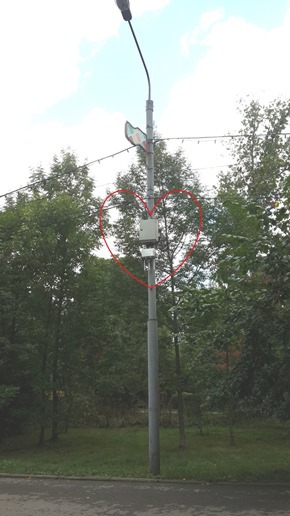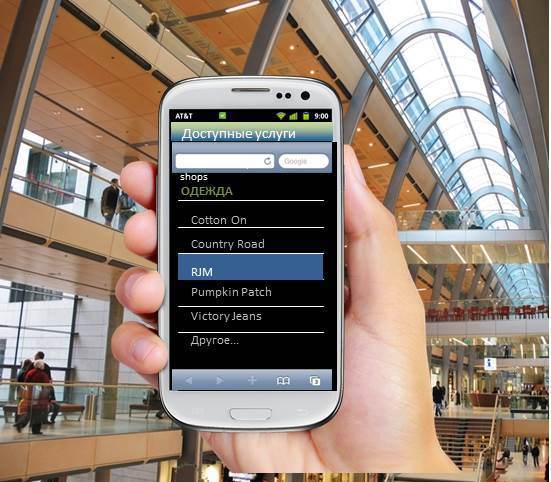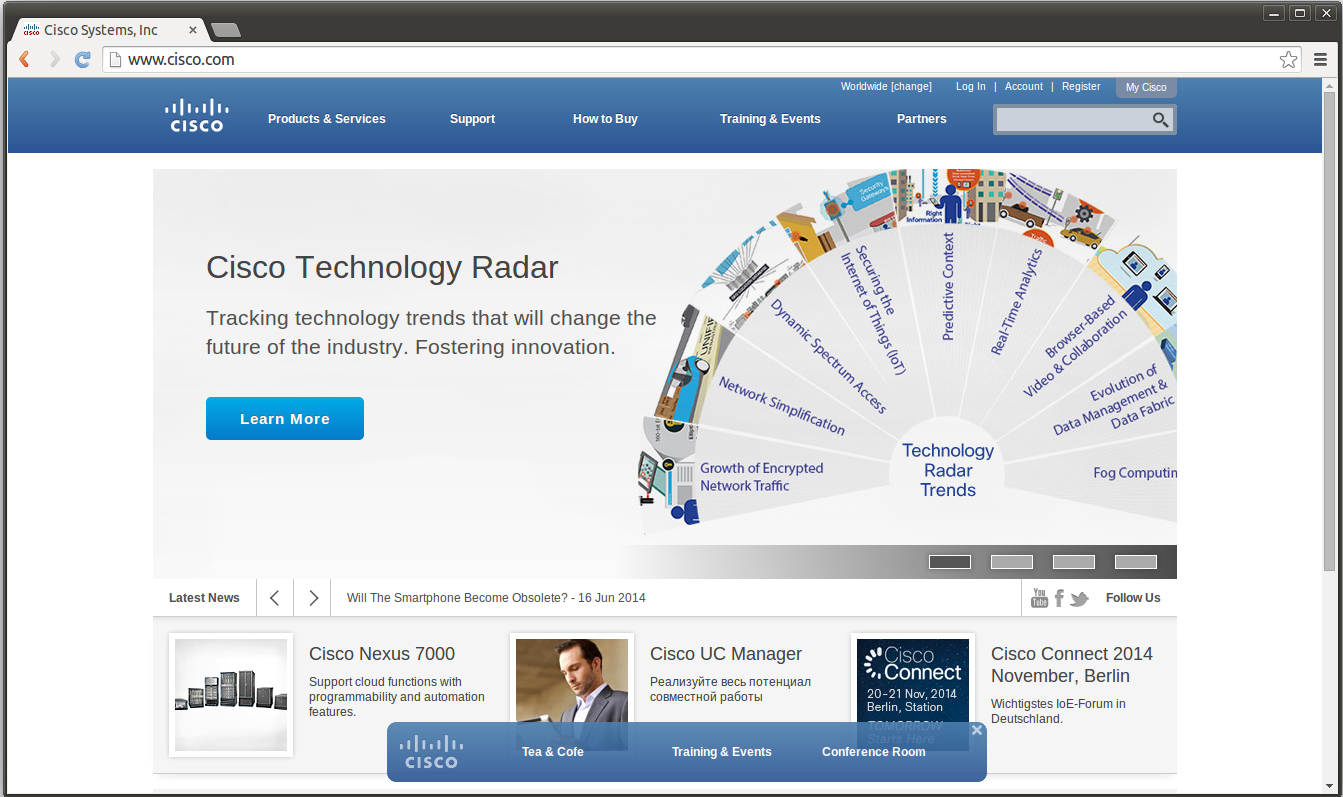New opportunities for communication with clients or as a Wi-Fi network with the functionality of the location of client devices and interaction with them will help your business
Over the past few years, Wi-Fi networks have covered vast areas of premises, as well as street areas, flooding apartments, offices, shopping centers, airports and even the aircraft themselves, educational institutions and public services, moving from the NICE-TO-HAVE category to the MUST- category BE .
This trend was greatly facilitated by the penetration of a variety of gadgets - smartphones, tablets, as well as the overall informatization of society. Using the Internet, you can make an appointment with government agencies, register for a flight, put a child on the queue in kindergarten, pay traffic fines, correspond with the tax service, check children's grades at school and much more.
The presence of Wi-Fi in individual segments becomes a profit generator. Take the hotel business. Hotels with Wi-Fi are more often chosen by tourists when booking, i.e. the presence of Wi-Fi directly affects the occupancy of the hotel.
In the education segment, the availability of Wi-Fi is becoming mandatory to ensure the educational process.
Some try to make the lack of Wi-Fi their "trick" ("We do not have Wi-Fi. Communicate with each other!" I do not always want to talk, sometimes I prefer Wi-Fi.). No one is indifferent!

The Cisco Visual Networking Index (VNI) in the 2014 report predicts 19 billion devices by 2017 (almost all of them have Wi-Fi!) With a population of 7.5 billion, which will give us an average of 2.5 devices per person, including infants and mountain centenarians. 60% of all traffic will be generated in wireless networks. The full report can be read here .
The possibilities of the owner of the site with Wi-Fi for customers will increase significantly if he can, through Wi-Fi, engage the client in the dialogue, provide him with relevant information and get the maximum response. I propose to determine relevance according to the SoLoMo
• СО principle, in particular , i.e. taking into account which social category I belong to - gender, age, interests;
• LOkalno - taking into account my current location - a shopping center, airport, office;
• MO is bold - information is delivered to that device, which even lies in my pocket at home and provides me with speedy access.
For such interaction, in accordance with applicable law, it is necessary to obtain the consent of the client to collect information about the movement of the device and provide additional information when connecting to the Wi-Fi service. Typically, a client agrees to share information about himself if he receives relevant information (not spam) and a high-quality Wi-Fi service (poor Wi-Fi is worse than not having it!).

Transaero Airlines logbook article
Looking through the information about the response of people to such relevant information, I found a number of studies that received 25-40% response to the proposal. Here are some of them:
• 29% of buyers in Europe respond to received special offers (Mobile Marketing Association, 2010)
• 40% of visitors to the stadium responded to a hot dog offer at a discount during the match (Mobile Internet 2.0: Monetizing Public Wi-Fi via Business to Consumer Relationships, 2012)
• 53% of mobile users are willing to share information about the location to receive more relevant suggestions (JiWire, 2010) The
decision of Cisco Connected mobile Experiences (CMX)is a platform for this kind of solutions. The platform uses the Cisco Wi-Fi infrastructure, designed to locate client devices with a given accuracy. The context add-in to Cisco CMX can be an external application developed by a third party. For its part, for external systems, the Cisco CMX solution provides an API.
The SMX solution allows you to build a Wi-Fi network capable of performing several key functions:
• Detecting Wi-Fi clients (smartphones in visitors' pockets with Wi-Fi enabled), positioning them in the territory, taking into account the number of storeys,
analysis of the nature of their movements around the site - where they go, at what speed, where they stop and spend time, where they crowd. All analytics can be obtained by room zones and time periods. Such analytics will allow the site owner to adapt their business processes to customer behavior.
• Connectionguests through a page that displays information adapted to the guest’s location. Those. when connected to the Wi-Fi network, a client in the restaurant zone will receive information about a free cup of coffee, a new seasonal menu, the availability of a children's room in a cafe, and in the women's clothing zone, invitations to sell clothes of fashion brands, discounts on accessories and household utensils. Another option is to use social network accounts to enter the network. In this option, the institution’s marketer can get additional information about the guest — gender, age, place of residence, as well as the opportunity to advertise himself in the guest’s circle of friends if he does Check In. Such information will make even more relevant offers to guests.

• Involvement- the ability to deliver the necessary information to the guest’s connected smartphone and receive a response. This information should directly or indirectly generate a positive cash flow for site owners - increase the level of guest satisfaction / loyalty, inform about the availability of additional services (navigation on the site, movie theater schedule, availability of a children's room, home delivery, urgent consumer credit, discounts on goods ...). Indirectly generate cash flow will be increased customer loyalty, who like to use the navigation in the shopping center, book online movie tickets, receive information about the services of the site. Direct cash flow is a direct response to “hot” offers and coupons, that is, additional sales.

A significant proportion of purchases are spontaneous purchases, i.e. acquisitions that were not planned, the need for a purchase was not recognized in advance. The Cisco CMX solution will help to make the most relevant offers to the guests of the shopping area and thereby increase the number of spontaneous purchases.
It would be interesting to look at a typical business case, which would clearly lay out the costs in such a solution against additional profit and would allow to evaluate the payback period and return on investment. Unfortunately, there is no typical case for all possible scenarios. Each business case takes into account a large number of factors related to a specific situation. In addition, the Cisco CMX platform is a tool and how skillfully it can be used by the customer’s marketer we can not foresee.
It would make sense to consider a business case for a specific vertical solution, for example, a retailer that has a number of trading floors, warehouses, a variety of business processes and see in general what positive changes make Wi-Fi solutions make. These changes may consist of:
• Mobile marketing, including mobile advertising and coupons.
• Additional services for the client using mobile technologies, for example, ordering home delivery of goods, watching videos of designers for selected clothes, navigating the store on the list of planned purchases, additional purchases (Upsell) for special offers along the way, assistance in making decisions about a purchase through a video call with an store expert, introducing payments from mobile platforms and additional sales by making a purchase immediately after the creation of “WOW!” effect, reduction in sales losses to customers who decided not to wait in line at rush hour
• Save space on the layout of goods due to the use of tablets by consultants with information on the full range, reduce the average customer service time due to information on the availability of goods, sizes, colors in the warehouse on the tablet of each consultant
• Improving the efficiency of the enterprise’s operations - optimizing warehouse accounting using mobile terminals connected to a central database, optimization of qualified resources of chain stores through video communication with an expert for received ia consultation.
The cost part of the project also does not tolerate approximation. If you look at the whole room, analyze the zones, you can divide them into several categories and the requirements for wireless equipment for each category will be different:
• Coverage is not required - office stairs, elevators ...
• Coverage is required without a map - office space, small shops in which the value of knowledge in which corner the client finds is insignificant
• Coverage is required with geo-positioning with different accuracy - trading floors, parking, restaurants, entertainment , cinema, skating rink.
Such zoning will help optimize the amount of radio equipment that will directly affect the cost of the project.
Studies of the Cisco IBSG business consulting department showed that the increase in profits of a fairly large retail enterprise in such a scenario, taking into account all the advantages, can reach 10% (read here in detail ).
Involvement requires the use of third-party products with Cisco CMX. There are already more than 20 SMX partners of Cisco in the world who have created products for various verticals - airports, hospitals, universities, shopping and exhibition centers.
In the Russian Federation, several companies are already developing applications for Cisco CMX. The developed solutions can be divided into two groups:
• solutions requiring installation and use of the application on the client’s mobile device
• network solutions that do not require the application on the mobile device.
Jet Infosystems company developed the Jet Toolbar product, which displays information content on a Web page viewed by a client, taking into account the client’s location on a Wi-Fi network. The Jet Toolbar solution works at the network level of a Wi-Fi network and does not require installing the application on a subscriber device. The format and content of information content that is shown to customers can be flexibly customized by the solution operator.
A few months ago, Jet Infosystems and Cisco jointly launched this solution in the Cisco laboratory in the Krylatsky Hills business center. As a result, we got such a nice screenshot, as well as the opportunity, going into the meeting room, order coffee and tea directly from the screen, view a list of the nearest trainings and events, order the meeting room:

The simplicity of the solution allows for both mass interaction with all clients of a Wi-Fi network and personal communication with each client individually.
In conclusion, I want to mention that such solutions, despite their novelty in Russia, have long and successfully been applied abroad. The number of completed Cisco projects is a three-digit number:
• Hotel MGM Resorts, Las Vegas
• Airport in Copenhagen
• Fernbank Museum (in conjunction with AT&T)
• Banks
• Hotels
• Shopping centers
• Hospitals
• Universities
A significant proportion of these projects are sites that want to provide a navigation service. We are already used to using navigation in the city. Extending your familiar mobile orientation experience and increasing customer satisfaction is often a good business case for implementing Cisco CMX. Another segment of the application of solutions is tracking the movement of personnel and equipment.
For more information on the Cisco CMX solution, click here .
This trend was greatly facilitated by the penetration of a variety of gadgets - smartphones, tablets, as well as the overall informatization of society. Using the Internet, you can make an appointment with government agencies, register for a flight, put a child on the queue in kindergarten, pay traffic fines, correspond with the tax service, check children's grades at school and much more.
The presence of Wi-Fi in individual segments becomes a profit generator. Take the hotel business. Hotels with Wi-Fi are more often chosen by tourists when booking, i.e. the presence of Wi-Fi directly affects the occupancy of the hotel.
In the education segment, the availability of Wi-Fi is becoming mandatory to ensure the educational process.
Some try to make the lack of Wi-Fi their "trick" ("We do not have Wi-Fi. Communicate with each other!" I do not always want to talk, sometimes I prefer Wi-Fi.). No one is indifferent!

The Cisco Visual Networking Index (VNI) in the 2014 report predicts 19 billion devices by 2017 (almost all of them have Wi-Fi!) With a population of 7.5 billion, which will give us an average of 2.5 devices per person, including infants and mountain centenarians. 60% of all traffic will be generated in wireless networks. The full report can be read here .
The possibilities of the owner of the site with Wi-Fi for customers will increase significantly if he can, through Wi-Fi, engage the client in the dialogue, provide him with relevant information and get the maximum response. I propose to determine relevance according to the SoLoMo
• СО principle, in particular , i.e. taking into account which social category I belong to - gender, age, interests;
• LOkalno - taking into account my current location - a shopping center, airport, office;
• MO is bold - information is delivered to that device, which even lies in my pocket at home and provides me with speedy access.
For such interaction, in accordance with applicable law, it is necessary to obtain the consent of the client to collect information about the movement of the device and provide additional information when connecting to the Wi-Fi service. Typically, a client agrees to share information about himself if he receives relevant information (not spam) and a high-quality Wi-Fi service (poor Wi-Fi is worse than not having it!).

Transaero Airlines logbook article
Looking through the information about the response of people to such relevant information, I found a number of studies that received 25-40% response to the proposal. Here are some of them:
• 29% of buyers in Europe respond to received special offers (Mobile Marketing Association, 2010)
• 40% of visitors to the stadium responded to a hot dog offer at a discount during the match (Mobile Internet 2.0: Monetizing Public Wi-Fi via Business to Consumer Relationships, 2012)
• 53% of mobile users are willing to share information about the location to receive more relevant suggestions (JiWire, 2010) The
decision of Cisco Connected mobile Experiences (CMX)is a platform for this kind of solutions. The platform uses the Cisco Wi-Fi infrastructure, designed to locate client devices with a given accuracy. The context add-in to Cisco CMX can be an external application developed by a third party. For its part, for external systems, the Cisco CMX solution provides an API.
The SMX solution allows you to build a Wi-Fi network capable of performing several key functions:
• Detecting Wi-Fi clients (smartphones in visitors' pockets with Wi-Fi enabled), positioning them in the territory, taking into account the number of storeys,
analysis of the nature of their movements around the site - where they go, at what speed, where they stop and spend time, where they crowd. All analytics can be obtained by room zones and time periods. Such analytics will allow the site owner to adapt their business processes to customer behavior.
• Connectionguests through a page that displays information adapted to the guest’s location. Those. when connected to the Wi-Fi network, a client in the restaurant zone will receive information about a free cup of coffee, a new seasonal menu, the availability of a children's room in a cafe, and in the women's clothing zone, invitations to sell clothes of fashion brands, discounts on accessories and household utensils. Another option is to use social network accounts to enter the network. In this option, the institution’s marketer can get additional information about the guest — gender, age, place of residence, as well as the opportunity to advertise himself in the guest’s circle of friends if he does Check In. Such information will make even more relevant offers to guests.
• Involvement- the ability to deliver the necessary information to the guest’s connected smartphone and receive a response. This information should directly or indirectly generate a positive cash flow for site owners - increase the level of guest satisfaction / loyalty, inform about the availability of additional services (navigation on the site, movie theater schedule, availability of a children's room, home delivery, urgent consumer credit, discounts on goods ...). Indirectly generate cash flow will be increased customer loyalty, who like to use the navigation in the shopping center, book online movie tickets, receive information about the services of the site. Direct cash flow is a direct response to “hot” offers and coupons, that is, additional sales.
A significant proportion of purchases are spontaneous purchases, i.e. acquisitions that were not planned, the need for a purchase was not recognized in advance. The Cisco CMX solution will help to make the most relevant offers to the guests of the shopping area and thereby increase the number of spontaneous purchases.
It would be interesting to look at a typical business case, which would clearly lay out the costs in such a solution against additional profit and would allow to evaluate the payback period and return on investment. Unfortunately, there is no typical case for all possible scenarios. Each business case takes into account a large number of factors related to a specific situation. In addition, the Cisco CMX platform is a tool and how skillfully it can be used by the customer’s marketer we can not foresee.
It would make sense to consider a business case for a specific vertical solution, for example, a retailer that has a number of trading floors, warehouses, a variety of business processes and see in general what positive changes make Wi-Fi solutions make. These changes may consist of:
• Mobile marketing, including mobile advertising and coupons.
• Additional services for the client using mobile technologies, for example, ordering home delivery of goods, watching videos of designers for selected clothes, navigating the store on the list of planned purchases, additional purchases (Upsell) for special offers along the way, assistance in making decisions about a purchase through a video call with an store expert, introducing payments from mobile platforms and additional sales by making a purchase immediately after the creation of “WOW!” effect, reduction in sales losses to customers who decided not to wait in line at rush hour
• Save space on the layout of goods due to the use of tablets by consultants with information on the full range, reduce the average customer service time due to information on the availability of goods, sizes, colors in the warehouse on the tablet of each consultant
• Improving the efficiency of the enterprise’s operations - optimizing warehouse accounting using mobile terminals connected to a central database, optimization of qualified resources of chain stores through video communication with an expert for received ia consultation.
The cost part of the project also does not tolerate approximation. If you look at the whole room, analyze the zones, you can divide them into several categories and the requirements for wireless equipment for each category will be different:
• Coverage is not required - office stairs, elevators ...
• Coverage is required without a map - office space, small shops in which the value of knowledge in which corner the client finds is insignificant
• Coverage is required with geo-positioning with different accuracy - trading floors, parking, restaurants, entertainment , cinema, skating rink.
Such zoning will help optimize the amount of radio equipment that will directly affect the cost of the project.
Studies of the Cisco IBSG business consulting department showed that the increase in profits of a fairly large retail enterprise in such a scenario, taking into account all the advantages, can reach 10% (read here in detail ).
Involvement requires the use of third-party products with Cisco CMX. There are already more than 20 SMX partners of Cisco in the world who have created products for various verticals - airports, hospitals, universities, shopping and exhibition centers.
In the Russian Federation, several companies are already developing applications for Cisco CMX. The developed solutions can be divided into two groups:
• solutions requiring installation and use of the application on the client’s mobile device
• network solutions that do not require the application on the mobile device.
Jet Infosystems company developed the Jet Toolbar product, which displays information content on a Web page viewed by a client, taking into account the client’s location on a Wi-Fi network. The Jet Toolbar solution works at the network level of a Wi-Fi network and does not require installing the application on a subscriber device. The format and content of information content that is shown to customers can be flexibly customized by the solution operator.
A few months ago, Jet Infosystems and Cisco jointly launched this solution in the Cisco laboratory in the Krylatsky Hills business center. As a result, we got such a nice screenshot, as well as the opportunity, going into the meeting room, order coffee and tea directly from the screen, view a list of the nearest trainings and events, order the meeting room:

The simplicity of the solution allows for both mass interaction with all clients of a Wi-Fi network and personal communication with each client individually.
In conclusion, I want to mention that such solutions, despite their novelty in Russia, have long and successfully been applied abroad. The number of completed Cisco projects is a three-digit number:
• Hotel MGM Resorts, Las Vegas
• Airport in Copenhagen
• Fernbank Museum (in conjunction with AT&T)
• Banks
• Hotels
• Shopping centers
• Hospitals
• Universities
A significant proportion of these projects are sites that want to provide a navigation service. We are already used to using navigation in the city. Extending your familiar mobile orientation experience and increasing customer satisfaction is often a good business case for implementing Cisco CMX. Another segment of the application of solutions is tracking the movement of personnel and equipment.
For more information on the Cisco CMX solution, click here .
Only registered users can participate in the survey. Please come in.
Are you ready to interact with you the site to which you came via mobile phone?
- 48.7% No 20
- 19.5% Ready to receive site information and Wi-Fi 8
- 24.3% Ready to receive special offers available on site and Wi-Fi 10
- 21.9% Ready for interactivity with site organizers and Wi-Fi 9
- 9.7% I will refuse coffee (beer), but I will get Wi-Fi! 4
